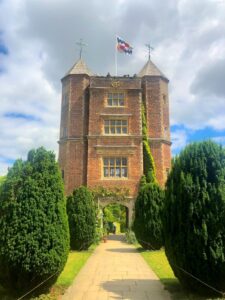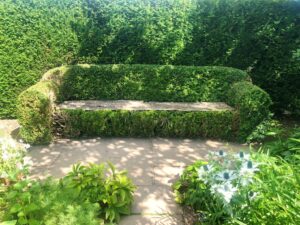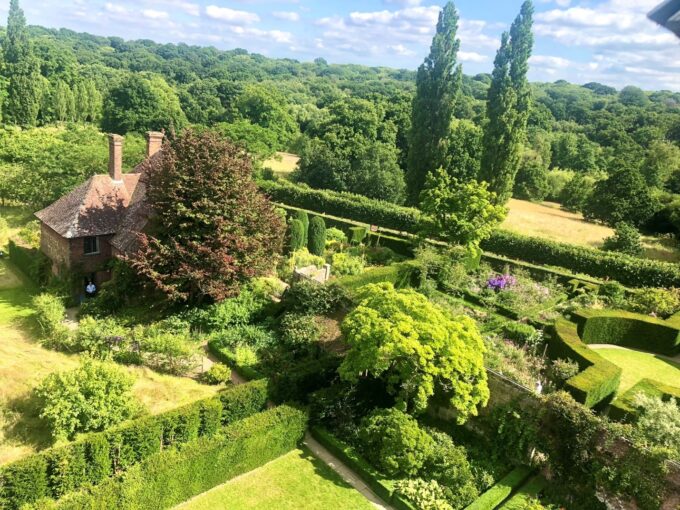Sissinghurst
This is the sixth installment of multiple reports from the week-long educational trip some of our team members took in the summer of 2022.
As I cross the entry courtyard of Sissinghurst Castle Garden, its famous red brick tower looms over the grounds like a watchful warden. My nose catches the scent of roses – the famous collection here is still in bloom despite the record-breaking heat. Sissinghurst’s class and character epitomizes the feel of traditional English gardens. Its many rooms delight the senses with a plethora of scenes and specimens. Created by writer Vita Sackville-West and her husband, author and diplomat Harold Nicolson, the garden was envisioned as a refuge in a turbulent era marked by world wars. Today, the foci at Sissinghurst are clear: present the widest possible array of experiences to visitors and practice gardening on the highest level.

Sissinghurst’s tower provides an impressive welcome to the garden.
Both of these aims are evident in the maintenance of the garden. The team at Sissinghurst maintains all sorts of installations: formal hedges and allées, an herb garden, perennial beds, a rock garden, and more. They do so with unmatched precision and a distilled intent. I notice that while certain boxwoods have been depth pruned, the work is much less intensive than what we typically perform in Virginia. At the same time, a hedge of English Yew has clearly been aggressively reduced and thinned within the past year or two.

While the rock garden presents a stark contrast to the rest of the garden rooms, it also highlights the skill of Sissinghurst’s gardeners to maintain such a diverse array of plantings.
I seize the opportunity to ask Sissinghurst’s Head Gardener about this approach. His explanation is remarkably simple. In short, they know their environment so well that they can dial in their approach to each plant to an exacting standard. Their team capitalized on a dry summer with minimal fungal issues to do some very intense work on the yew hedge. In that case, depth pruning was required, but only as an accessory to the main project of size reduction. Some of the boxwoods required a light prune to encourage growth in certain parts of the shrubs after years of shearing alone. However, the staff here would never depth prune boxwood as hard as we do in Virginia – their conditions simply do not require it.

The verdant beds throughout the grounds exemplify the breadth and beauty of plant material available to English gardeners.
However, our location does regularly mandate such work. In fact, that is an excellent example of a key takeaway from Sissinghurst: as gardeners, we should adapt our plant selections and gardening techniques to our surroundings. This implies adjusting our technical approach to horticulture where appropriate, from considering alternative mulches to experimenting with new plant arrangements. It also compels us to revisit plantings that regularly struggle in our area due to weather, pests, or other issues. The overwhelmingly broad collection of plants at Sissinghurst emphasizes the extent of options available to us when creating and enhancing landscapes. In some cases, suitable substitutes for common plantings are readily available. Others will require research, but this can in turn be a source of joy for both our staff and clients.

Flat-topped boxwood combines with trees, perennials, moss, a water feature, and a planted brick wall to create an incredibly dynamic installation of varied heights, shapes, and textures.
Above all else, we must not let patterns turn into paralysis. Consistency and familiarity are imperative elements of landscaping. They create a sense of rhythm and flow, and they enable a homeowner to express themselves through their garden. However, we must not grow stagnant. The greatest lesson of Sissinghurst is the reminder that growth is the keystone of horticulture.

